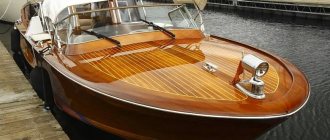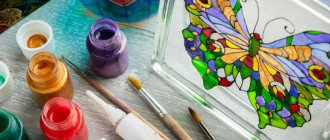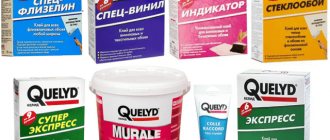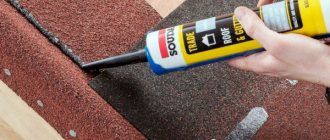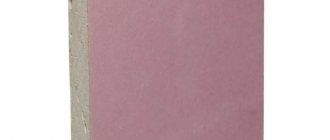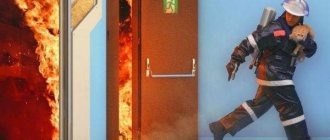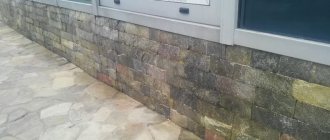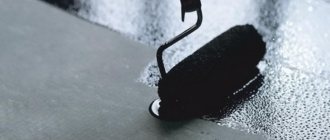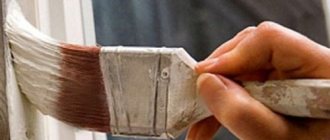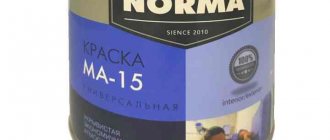Parquet boards in a house or flooring on the deck of a ship, walls with a ceiling in a bathhouse or garden furniture? The list of things that can be treated with yacht varnish is easy to continue. Thanks to the properties of this paint and varnish, varnished surfaces receive a reliable protective layer with high resistance to impact.
What is this composition? What are the known advantages and disadvantages of yacht varnish? Which version of ship's paintwork is best to choose in a particular situation? The article below offers a detailed answer to these questions.
Tips for choosing varnish
When choosing a paint and varnish material, it is recommended to adhere to a number of criteria, the fulfillment of which in the future will allow you to obtain a high-quality coating:
- First of all, you need to understand how intense the mechanical loads on the floors will be. If the exposure is small (up to 2-3 people are constantly in the room), a water-based varnish would be preferable.
- For varnishing the floor in the kitchen or hallway, a composition with pigments is best suited. This varnish will protect the surface well from dirt and dust. A waterless polyurethane mixture is also suitable for kitchen floors, as it is well absorbed by the coating and does not require special care.
- If you need to varnish the floor in a room where there is a high load on the floor (office, catering establishment, etc.), then the best choice would be mixtures with water-repellent properties.
Yacht varnish
A special (yacht) varnish is used to treat wooden yachts. This composition can also be used in other places where operation occurs in conditions of high humidity. However, it is worth noting here that yacht paints and varnishes are not intended for indoor use.
The fact is that manufacturers, trying to achieve the main qualities of yacht varnish - durability and resistance to moisture, use strong toxins for this. We are talking about toxic components such as xylene and toluene. Therefore, in order to avoid poisoning, you should not cover parquet or furniture with this varnish - it is dangerous.
Alkyd composition for metal
Alkyd varnish for metal surfaces is a mixture of alkyds and polymers. The components of the mixture give the metal a beautiful lacquered shine. This varnish can be applied with a brush, roller or from a spray can.
The advantages of alkyd varnishes for metal include the following characteristics:
- coating strength;
- resistance to aggressive chemical environments (alkali, acid, household chemicals, alcohol);
- moisture resistance;
- thermal resistance;
- resistance to wear and other mechanical stress;
- excellent adhesive qualities (the ability to adhere to different types of materials);
- Possibility of use both indoors and for finishing the outside of the building.
A high-quality surface can only be varnished with a multi-layer coating, which involves filling and priming the surface. Also, do not forget that applying any materials is permissible only on a clean, grease-free surface. To achieve the best results, experts recommend using finishing materials from the same manufacturer.
Chemical composition and properties of paints and varnishes
The name “yacht” or “yacht”, “deck” and “ship” in relation to the varnish composition has become an indicator of a high level of practicality, and is also used by a large number of manufacturers even as a marketing ploy.
The popularity of this type of finishing has increased, and the point is not even that buyers began to acquire water sailing vehicles en masse, but the use of this type of coating for renovation work inside apartments and houses. The performance qualities of yacht varnish can be considered an order of magnitude higher than those of traditional products that are intended to cover furniture, floors and even doors.
In general, these types of paints and varnishes are more resistant to moisture, elastic, stronger, and able to withstand large temperature changes. But, when choosing them for covering indoor surfaces, you should remember one very huge drawback - a very high level of toxicity.
Yacht varnishes, due to the fact that they were not originally intended for household needs, in addition to organic resins, contain very toxic chemical compounds as solvents - xylene and toluene. Substances evaporate very quickly and easily during work and after application. During work, toluene begins to decompose into hydrogen and carbon, and causes severe irritation of the mucous membranes of the eyes, as well as the respiratory system, severe headaches, lacrimation and even nausea.
But xylene can even penetrate into the human body not only through the respiratory tract, but even through the skin.
Toxic fumes will occur for a certain period of time after the surface has completely dried.
This toxic element, when accumulated, begins to cause diseases of internal organs and dysfunction of the nervous system. It is for this reason that when carrying out work it is necessary to ensure full ventilation, and also this varnish cannot be used to cover furniture in the bedroom, children's room, or even in the kitchen, and it is also not suitable for large areas of the house where there is no good ventilation.
Specifications
The constant and main component of varnishes is alkyd resin, which acts as a base. Among similar products, alkyd varnishes are unrivaled in terms of resistance to temperature fluctuations.
Vibration loads do not in any way affect the quality of the applied alkyd composition; in addition, the varnish does not have the adhesive qualities that many representatives of paint and varnish products have. The product is absorbed directly into the wood and does not penetrate into the floor cracks in the log house. Such product characteristics make it possible to minimize floorboard squeaks when treating the floor with an alkyd mixture.
The first alkyd-based varnish that began to be produced in Russia was the composition PF-231. The product is intended for use on all types of surfaces. One can note the visual attractiveness of the base obtained after treatment with this composition - the film evenly and neatly covers the working surface.
In addition to the positive characteristics, the composition also has some disadvantages. The main disadvantage is the short service life of the coating due to its minimal hardness. Due to this, after 2-3 years the surface of the wooden floor will have to be treated again.
On other materials the composition will last many times longer.
PF 283 forms a glossy layer, notable for its decorative properties. Essentially, these products are a mixture of alkyd resin, fatty acids and natural solvents. What surfaces can acrylic varnish be applied to? In addition, the ingredients include a drier.
Most often, such varnish is sold in a can as an aerosol of 150 ml.
PF-170 includes resin in combination with specific additives and aliphatic hydrocarbons. The composition can be used for wood, wood-containing materials, metal and ceramic substrates. In addition, bases treated with paints, enamels and primers are very often coated with a protective and decorative composition. The products are allowed for use indoors and outdoors.
The varnish is manufactured in accordance with GOST, is resistant to chemical detergents and aggressive environmental factors, allows the surface to “breathe” and is very economical in terms of consumption.
Packing methods
Most often, varnishes are sold in cans, for application of which you need to buy brushes or rollers. They can have a large volume, which is convenient for varnishing large surfaces. Manufacturers also make products in aerosol form, packaged in cans. They are easy to use and practical, although their price is much higher.
Kinds
There are several types of alkyd varnishes.
Two-pack
They consist of two components, the second component being a desiccant. Before application, the mixture must be combined into one composition in the ratio specified by the manufacturer. After this you can start painting. Typically, a durable and high-quality coating requires surface treatment in 2 or 3 layers.
An important feature of such compositions is the short shelf life of the finished mixture - the solution is suitable for use for 8 hours. According to their characteristics, the compositions are characterized by the highest performance
However, the varnish has a pungent odor, as well as low resistance to sunlight.
Alkyd-urethane
It becomes popular due to the characteristics of the mixture in which alkyds react with polyurethane. The mixture is improved due to a special component - toluene diisocyanate, thanks to which the varnish drying process is carried out slightly differently. First of all, the solvent evaporates, and after that the mixture solidifies when exposed to oxygen. The drying time of the surface with this drying mechanism is reduced, in addition, the resistance to abrasion, temperature influences and high humidity improves.
However, due to the fact that half of the alkyd-urethane varnish consists of an organic solvent, its toxicity increases. The products are also unsafe in terms of fire, so the operation of coatings requires additional safety measures. In addition, if the coating does not dry completely, and the base is already in use, situations are inevitable in which the varnish is deformed, forming serious defects. They can only be removed with a grinder.
Matte and glossy
The compositions differ only in what texture the dried base has after processing. The matte composition forms a more practical surface, since dirt and marks are less visible on it; there are also semi-matte mixtures. Gloss is best used in rooms with minimal lighting, as it reflects light perfectly. In terms of the set of components, both products do not differ at all, which is why the choice of mixture will be based only on the taste preferences of the consumer.
Yacht
Based on the name, the scope of use of the product becomes clear - the mixture is produced for coating wooden yachts, but in addition to treating ships, such a specialized composition can be used on substrates that are used in humid microclimates
However, please note that yacht varnish can only be used for exterior use.
This limitation is explained by the chemical composition of the material - to increase moisture resistance during the production of varnish, toxins, for example, toluene, are included in its main set of required elements.
For metal
In its composition, it is a mixture of alkyds and polymers. The substances provide metal substrates with shine and an attractive appearance. The mixture has high resistance to chemically aggressive substances, high humidity, thermal effects on the surface, in addition, adhesion to various types of material makes it possible to use the varnish indoors and outdoors.
To achieve high quality results, it is better to use products from one manufacturer. Alkyd compositions for parquet can be classified as follows:
- Water-based mixtures. The advantage of the solutions is the absence of odor and environmental friendliness of the product. But such paints and varnishes are expensive.
- Two-component varnishes.
- One-component compositions.
Based on the type of coating, alkyd varnishes are divided into the following subtypes:
- glossy;
- matte;
- semi-gloss;
- semi-matte.
Varieties
Depending on what base is used, there are several types of yacht varnish that
will differ in performance characteristics:
- Alkyd. Due to its low cost, it is one of the most popular, but far from the safest. It contains benzene compounds, white spirit, toluene in large quantities, as well as a sharp and difficult to perceive odor. Throughout the entire period of application of the coating, their surface will constantly evaporate chemicals into the air, and therefore this varnish composition can only be used for external work - covering roofs, wooden fences and gazebos. The service life is approximately 5 years, provided that the load is moderate mechanical.
. It has qualities that are similar to the previous material, it dries quickly, it contains special plasticizers, and it is suitable for processing soft wood. It is very toxic, so this yacht varnish can only be used for exterior use.
Alkyd-urethane- Urethane is alkyd . It contains a larger amount of urethane compounds, which will prevent the rapid evaporation of volatile toxins, and therefore it will be less dangerous to human health. The material is quite resistant to temperature changes and is plastic. This type of deck varnish is very suitable for indoor flooring, and it can be used for underfloor heating systems because the varnish will not crack. The service life is up to 10 years.
- Acrylate . This type of varnish composition is less toxic and consists of water-soluble components, so the material is perfect even for interior work. Among the disadvantages, it is worth highlighting the rather high cost of work and low resistance to moisture. It is impossible to coat the hull of a boat with such a varnish composition, because in this case the “yacht” marking from the manufacturers refers only to indicators of high quality for marketing purposes only.
Also, according to the degree of gloss, semi-gloss, glossy and matte varnishes can be distinguished. The use of the latter is more reasonable if you plan to process large floor areas in a bright room or technical buildings.
Moreover, dust, defects and small cracks are not so visible on a matte surface, and gloss can highlight all the imperfections and irregularities, and is only suitable for decorative finishing or floor covering in a darkened and small room. Otherwise, the choice will depend only on taste.
The reflective properties of the materials will not affect the technical characteristics. The range of most manufacturers includes pigmented paints and varnishes for buyers who prefer color tinting.
Manufacturers
Several brands are in wide demand among buyers:
- White house
- Parade
- Tikkurila
Alkyd-urethane mixtures from Parade were able to win a large audience, since this manufacturer sells varnishes with increased elasticity. Buyers leave reviews in which they report that the film that forms after applying the product does not crack or deteriorate for a long time. Alkyd products can emphasize the naturalness of wood material and make the floor more impressive. Parade offers its customers mixtures for exterior and interior use.
White house has won over customers with its affordable prices and low scent. The manufacturer produces high-quality varnishes that are characterized by high wear protection, rapid polymerization and a decorative component. Varnish is able to preserve the natural shade of wood. Just like Parade, the manufacturer produces products for working with outdoor and home surfaces.
Tikkurila is considered a trusted manufacturer of many materials for construction work. The brand has won the respect of customers and is known as a manufacturer of reliable and high-quality products. Tikkurila yacht varnish, which is characterized by fast polymerization and excellent spreadability, receives good reviews. The low price helps this brand become a leader among alkyd varnish manufacturers.
Methods of applying varnish for yachts
Yacht wood varnish can be applied to surfaces previously coated with alkyd or polyurethane compounds, sanding the areas of chips and damage to the old layer. After thoroughly mixing the composition, if necessary, dilute it with White Spirit and apply it to the prepared surface. Brushes, rollers and a spray gun are used for painting.
Regardless of the composition, yacht varnish is used for wood as follows:
- clean the wood surface from dirt;
- sand or sand the wood to eliminate unevenness;
- apply paintwork, making smooth movements back and forth;
- re-coat the wood with paint after the previous layer has dried.
The use of a spray gun is optimal when covering large surfaces outdoors. For this application, use compositions diluted with a “slow” solvent (up to 10% of the total amount), the particles of which do not have time to harden in the air, and a gun with a nozzle size of at least 1.7 mm (it is kept at a short distance from the wood). Otherwise, it is difficult to achieve uniformity and shine of the coating. When working with a brush or roller, do not make sudden movements, otherwise bubbles will form, reducing the aesthetics of the processed products.
| Yacht wood varnish |
| 8 (495) 995 40 39 |
Popular brands
Alkyd varnish PF-231 belongs to one of the first series of parquet varnishes produced in Russia. The composition is easy to apply, and the film looks neat and provides decent protective characteristics. However, the main disadvantage of PF-231 is very significant: the coating does not have a long service life and must be replaced after 2-3 years.
MCh-0163 is a two-component product that includes alkyds, urea-formaldehyde resin, and an acid hardener. In comparison with PF-231, this mixture is more competitive: it resists moisture more reliably and takes mechanical loads better. The disadvantages of MCh-0163 should be considered instability to ultraviolet radiation, insufficient elasticity of the film coating, a rather pungent odor, and the possibility of bubbling on the surface during varnishing.
EP-2146 is a one-component composition with good performance properties. Epoxy resin is used as a modifier here. EP-2146 has decent hardness, moisture and abrasive resistance. EP-2146 is used for varnishing parquet, veneer, fiberboard, chipboard, plywood.
Characteristics
Almost every type of varnish goes through testing before it hits the shelf. Before testing, each sample is kept for two weeks under normal conditions. Testing consists of studying external characteristics using special devices.
The device determines the following technical characteristics:
- thickness of varnish when applying two layers;
- the period during which the varnish completely hardens;
- resistance to mechanical stress;
- resistance to humidity;
- consequences of contact with detergents;
- term of use.
Only those mixtures that meet the stated requirements are allowed for sale.
Buyers receive a reliable and high-quality product, which after use will significantly transform the surface being treated. To carry out internal work, you should rely on your personal requirements, which are necessary to achieve a specific goal.
As a rule, alkyd varnishes are used to work on wooden surfaces.
Alkyd urethane varnish can be divided into two main categories:
- yacht;
- parquet;
Yacht material is used to paint ships. According to statistics, this product is considered the most popular. Buyers are attracted by the low cost of the product along with its increased resistance to wear.
Parquet varnish is used for working with wooden floors. Both varnishes are suitable for treating any other wood surfaces. Yachts are often purchased to work with gazebos, verandas and other architectural forms.
Parquet varnish is relevant for interior finishing activities. In addition to floors, it works well on furniture, frames, railings and doors.
Alkyd varnishes for parquet are divided into several types.
- Water-based solutions. This product is popular because it has no odor. Advantages include properties such as environmental safety and resistance to high temperatures. However, such products have a high cost, which is not suitable for every buyer;
- Two-component. Such mixtures create a film on the parquet. They are low cost and have a pungent odor when drying. The material cannot be stored in open containers for long, so you need to use up the varnish immediately;
- One-component varnishes. They can be stored for a long time in a closed container. Polyurethane mixtures are not afraid of contact with chemicals;
This varnish can also be divided into several subtypes:
- matte;
- semi-matte;
- glossy;
- semi-gloss.
Matte products will be optimal for surfaces that quickly become dirty during use, since the matte film is easy to clean.
The gloss reflects light well, so it is suitable for use in dark rooms.
PF-231
This varnish is considered a high quality alkyd-based product. It creates a gloss on the surface that is resistant to wear. The solution is transparent, has decorative and moisture-resistant qualities. This material is purchased for working with metal and wood surfaces, as well as for processing parquet indoors.
MCH-0163
This product belongs to the category of two-component varnishes, the composition of which consists of urea-formaldehyde and alkyd resins, acid hardeners.
If we compare MCh-0163 with the previous version, this type of varnish has improved characteristics:
- high level of water resistance;
- strength;
- resistance to abrasive substances.
EP-2146
The brand is considered a one-component alkyd-epoxy composition that has improved characteristics. Epoxy resin acts as an improved element. The product is characterized by increased hardness and resistance to abrasives and water.
PF-283
Used for processing wooden and metal surfaces. When applied, the solution forms a high-gloss layer that has good decorative qualities. PF-283 is a mixture that contains alkyd resins, modified vegetable oils, fatty acids of vegetable oils, tall oils in organic solvents. The components also include a drier. The varnish should be applied with a brush or use an aerosol in a can for this purpose.
You can learn more about the types of alkyd varnish by watching the following video.
Types and categories of protective coatings
The degree of toxicity, chemical composition and technical characteristics of each common category called yacht varnish vary, depending on the needs for which certain characteristics are intended. In order to correctly select the required degree of strength and resistance to impacts, it is not enough to simply read the words “deck varnish” on a bright label.
You need to choose from several categories what is truly suitable, and for this you need to know the composition and properties, the degree of reliability and decorativeness, and rational intended use. Based on their composition, all varnishes for this purpose are divided into:
alkyd;
alkyd-urethane;
from urethane and alkyd;
acrylate.
A good varnish for wood will not only protect the material from external influences, but will also give the surface a picturesque and decorative quality, making the wood an independent element and a semantic accentuation of a certain interior.
Wooden country houses, comfortable wooden cottages with heated floors, or the interior lining of a room will take on a more expensive and picturesque look if the natural parts of the interior are varnished. A properly selected composition will avoid troubles associated with toxic fumes.
For future decorativeness and picturesqueness, it is of no small importance which of the 2 categories the developer chose: matte or glossy surface. The matte composition is more practical and does not become covered with dust; the glossy composition is good as a decorative component, but collects dust and requires additional care
Gloss varnish is common where appearance rather than durability of the coating is considered the main determining factor, but not every paint will look good under a matte layer.
Carrying out painting work
Before applying the varnish composition to the floor or other surfaces, fresh boards should be thoroughly cleaned, sanded, and debris removed. Before starting work, stir the liquid, bring it to homogeneity, and, if necessary, dilute with white spirit or another solvent that is ideal for varnish.
The coating should be applied with a roller, brush or using a special paint sprayer. Work should be carried out only at positive air temperatures in the atmosphere - from 15 to 30 degrees and an average level of humidity. In this case, be sure to protect your hands and respiratory organs. For outdoor wood processing, you should choose warm, but not at all hot weather, and there should be no strong wind or precipitation.
When the wooden surface is cleaned, it should be treated with a 20% diluted varnish or other suitable primer mixture. When the bottom layer has dried, the material should be sanded again using fine abrasive paper and any identified roughness should be removed, and then a new layer of undiluted varnish should be applied.
Depending on how tight your finish is, you may need to apply two or even three coats. If the wood has previously been varnished, then the old coating should be removed only when it is cracked. And if you just need to update everything, then first try the department in an inconspicuous small area.
If within a few days after drying the varnish does not begin to peel off and swell, then it will be possible to cover the entire surface with it in a couple of layers, and each subsequent one can be applied only after the bottom one has dried. The drying time for the material will be approximately 4 to 8 hours. Between applications, you can sand with an abrasive for strength.
The consumption of deck varnish per square meter is approximately 0.1 kg. For successful drying, it is necessary to protect the surface from direct rays of the sun, heating from electrical appliances and moisture. The coating will completely harden in 4 to 7 days. Under no circumstances should any remaining material be stored in the cold or near heating devices, and it is also prohibited to pour it down the drain.
Advantages
Ship varnish has a wide range of significant advantages. Let's consider the most relevant ones.
- Excellent adhesion to wood. It has a high degree of adhesion to the surface material. Instantly impregnates the surface material, remains in the wood structure for a long time and acts for a long time.
- Not susceptible to the harmful effects of UV. The sun has almost no harmful effect on the material coated with yacht varnish, since it contains special components that absorb this radiation, as well as light stabilizers that convert ultraviolet rays into heat. This keeps the protective film intact.
- Makes the surface attractive. The decorative component of the coating plays a big role in attracting attention to the product. This coating looks well-groomed.
- Hydrophobicity. This product increases the moisture resistance of wood, helps get rid of the destructive effects of rot, mold or fungus that destroys wood.
- Wear resistance. The film ensures durability and abrasion resistance of the material. At the same time, the coating is protected from scratches and chips.
- Chemical resistance. There is no reaction with acids, alkalis, or salts. This allows, if necessary, to wipe the surface using household chemicals.
- Elasticity. The surface coated with this varnish can bend without significant damage to the film. At the same time, it will not crack.
- Relatively low price. Availability when purchased is another advantage of yacht varnish in addition to other properties. Saving money makes these products in demand among a wide range of buyers.
Photos of the best yacht varnishes
The best yacht varnishes for exterior use
The coatings contain a large number of toxic substances, so applying them without a mask and gloves is prohibited. At the same time, products for external use are highly resistant to negative external factors. After finishing, wooden structures will be reliably protected from moisture and UV rays, which significantly increases their service life. Analysis of user reviews made it possible to identify the 2 best yacht varnishes out of 5 nominees.
V33 Vernis Bateau glossy
The coating with a urethane-alkyd base is enriched with resins that increase the surface's resistance to the aggressive effects of the marine environment. It protects wooden structures from the negative effects of a humid climate. Paints and varnishes are used when finishing various types of wood. The next layer is applied after 6 hours and released into containers with a volume of 0.75 l, 2.5 l, 5 l.
Advantages
- Colorless;
- Makes the coating waterproof;
- Abrasion resistant;
- Gives the surface a glossy shine;
- Low consumption;
- Not susceptible to sea salts.
Flaws
- High price;
- For exterior use only.
Users confirm the quality and reliability of the product. All characteristics correspond to the parameters specified by the manufacturer. Paintwork protects the surface from negative mechanical and atmospheric influences, extends the life of wooden structures.
Rust-Oleum Marine Coatings Spar Varnish
Transparent varnish provides chemical resistance, protection of wooden structures from water, UV rays, sea salts, and mold. It can be applied to a surface that was previously covered with stain or paint. Before the procedure, the product is diluted with white spirit. They produce paints and varnishes in tin cans with a volume of 0.95 liters. Complete curing occurs after 72 hours.
Advantages
- Low consumption;
- Increases the strength of coatings;
- Easy to use;
- Good degree of adhesion.
Flaws
- High price;
- Persistent unpleasant odor.
The product can be applied at temperatures from +10 to +32 C and humidity less than 85%. In this case, direct sunlight should be avoided. The coating dries quickly, but when finishing structures made of cedar or other species with a high oil content, the time may increase.
Pros and cons of polyurethane varnish
pros
1. Good adhesion. The varnish adheres firmly to the surface and does not peel off even when applied to a polished base.
2. Resistance to abrasion and mechanical damage. The varnish is impact resistant and retains its original appearance for several years.
3. Resistance to aggressive environments. Products coated with polyurethane varnish can be cleaned using household chemicals.
4. Moisture resistance. Polyurethane varnish reliably protects wood from moisture penetration and swelling.
5. Fast drying. The varnish dries almost completely in 2-3 hours, drying takes a maximum of 8 hours. 3-4 days after application, the surfaces can be subjected to mechanical stress - they are reliably protected.
6. Eco-friendly. The varnish contains no toxic elements, so it is absolutely harmless to people and animals.
7. Cost-effective. The varnish is used very sparingly. To obtain the desired effect, it is enough to apply 1-2 layers.
Minuses
1. Over time, polyurethane varnish turns yellow.
2. If alcohol-containing liquids come into contact with the varnish layer, difficult-to-remove stains may appear.
Working with varnish indoors
Before applying varnish, the surface must be thoroughly sanded, then cleaned of remaining particles and dust, otherwise unsightly bumps will remain on it. All holes (for example, from nails) are first filled with putty and then sanded.
The next step is applying primer varnish. This operation is especially important before varnishing the parquet. The primer will provide better adhesion of the base material to the surface, remove remaining dust particles, and additionally protect the wood from moisture. In order for the choice to be correct, you must follow several rules.
- The first stage before priming work is to check the composition on a small area of the floor covering. This way you can determine how the composition acts on wood.
- Equally important is the compatibility of the primer varnish with the base varnish. For example, if you decide to use a water-soluble varnish, then the primer material should be the same.
- Drying the primer takes anywhere from 15 minutes to 3 hours, so this process won't take much time anyway since most base coats take much longer to dry.
- Apply primer varnish to the cleaned material along the grain, evenly. The main recommendation is full compliance. The primer and base material must be from the same manufacturer. In this case, there is a guarantee that there will be no unpleasant “surprises” (for example, dried bubbles).
The primer and base varnish are applied either manually - with a roller, wide brush, or spray. Different compositions need their own drying time. The fastest varnishes (alcohol-based) require speed from the master, as they begin to set after 10-15 minutes. “Slow” compositions (water-based) dry from several hours to several days. The period indicated on the product packaging is the time that must be waited before applying the next layer.
To improve the appearance of wood, add tone or enhance the pattern, use tinted varnish or stain. The latter liquid is produced on a water, wax, organic or alcohol basis. Its task is to make the drawing more expressive and contrasting.
Using varnish: secrets of proper application
Among the clients of , a leading supplier of finishing and paintwork materials in Russia, polyurethane varnish for yachts, which is odorless and suitable for interior work, is in high demand. One-component yacht varnish for interior woodwork is used for processing furniture facades, and two-component varnish is used for application to finishing elements and internal parts of wooden structures (rafters, ceiling beams, vertical posts), which is due to high dry residues and maximum durability of the coating.
Yacht varnish should be applied under a number of conditions. Thus, the moisture content of the wood being processed cannot exceed 20% (it is pre-dried). Painting should not be carried out at an ambient temperature of less than +10 0C, otherwise the coating will lie incorrectly, warp, and its service life will be significantly reduced. It is also not recommended to use yacht varnish when treating surfaces that contain dust and dirt.
Apply yacht varnish in 2 - 3 layers (recommendations for application are indicated on the packaging - carefully read the instructions). This is enough to reliably protect wood from chemical influences, mechanical deformations, chips, impacts, and humidity.
Characteristics and intended purpose
When choosing a yacht, be sure to pay attention to its composition. When choosing a dye, it is not recommended to be guided by price, since it is not a guiding factor.
Exterior work is carried out using a polyurethane compound with acrylic. It is resistant to moisture and weathering, abrasion, scratches and other mechanical stress.
A special material based on acrylic has good adhesive properties. It dries quickly, which reduces the time required for repair work. If the temperature outside is above zero, then reusable coating of yacht varnish on a surface per day is allowed. The coating dries in 4 hours thanks to the polyurethane-acrylic dispersion that is included in the composition.
Alkyd urethane finishes contain toxic substances. Despite the presence of plasticizers, which eliminate the possibility of drying and evaporation of yacht lak, its use indoors is prohibited.
If the room temperature is above zero, then finishing is carried out with yacht lak, the main components of which are alkyd or urethane. Urethane plasticizers reduce evaporation and provide flexibility to the varnish film. The finish can withstand temperature changes.
Alkyd compositions are marked yacht, which indicates their improved technical characteristics. External finishing is carried out with their use, since it is capable of releasing harmful toxic compounds when drying and during heating during operation.
Properties of yacht varnish
Protection from moisture is the main function of this coating, which leads to a number of additional effects. The elastic layer of waterproofing protects against temperature changes, mechanical wear, and exposure to sunlight.
The colorless composition favorably emphasizes and preserves the natural texture, giving the wood not only strength, but also aesthetic durability.
The ability to choose different degrees of reflection - from mirror to matte, and easier surface care give undeniable advantages to this varnish. But the content of toxic elements makes it impossible to use it in closed spaces.
Poor resistance to low temperatures limits the scope of use outdoors. Modern manufacturers offer special compositions of yacht varnishes with improved characteristics.
